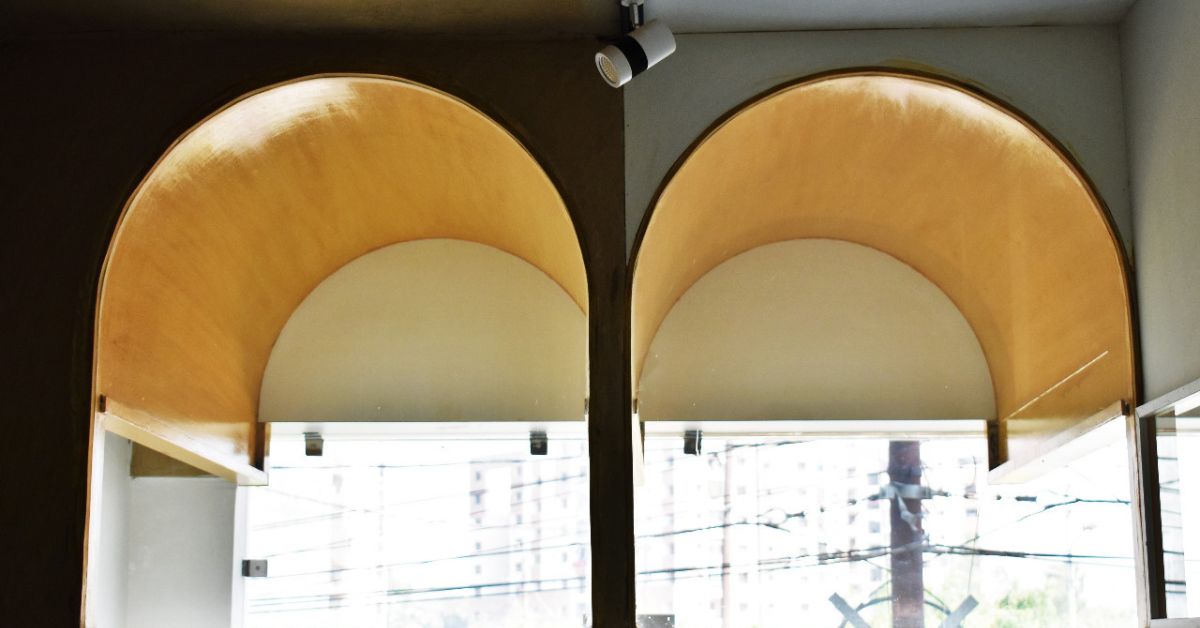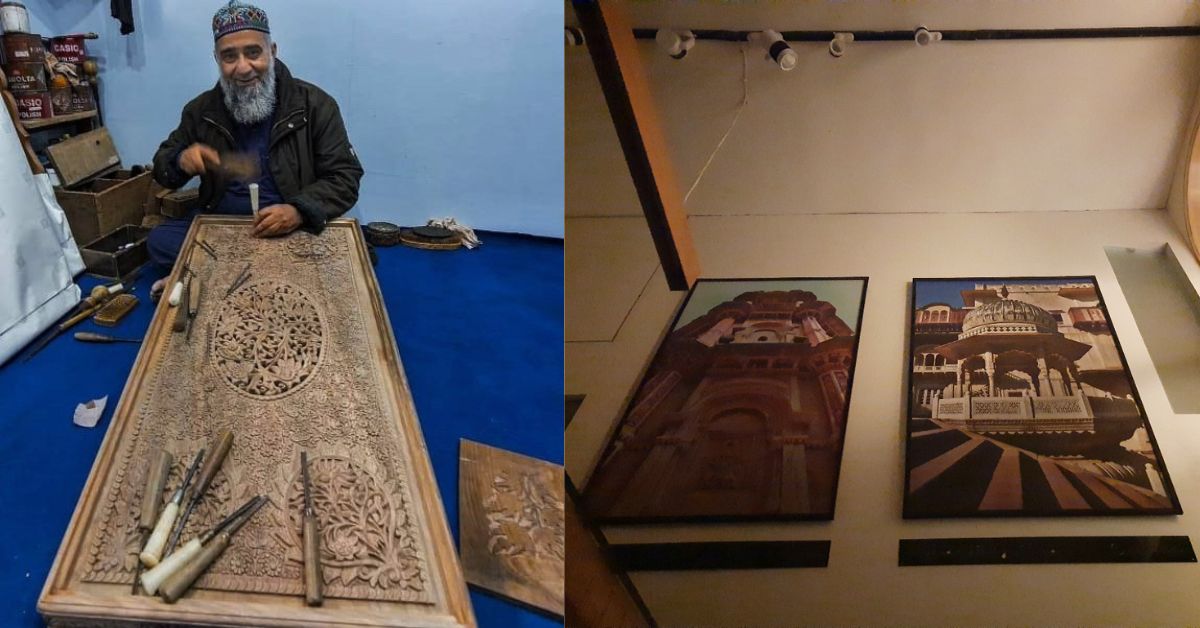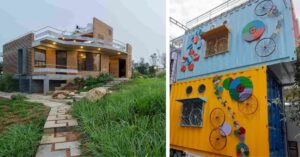Lucknow Architect’s Office Needs no Heaters or ACs, Saves Thousands on Electricity Bills
Lucknow architect Anant Krishna shares how he built his eco-friendly office with mud walls, and how he ends up saving thousands on electricity without having to use ACs, heaters, or any appliances to remain warm in the winter and cool in the summer.

In the concrete jungle of Lucknow, where air conditioners and heaters are rampantly used without care, one office in the city stands out. It needs no appliance to control the temperature, humidity, or ventilation, no matter what season it is.
Architect Anant Krishna has followed a sustainable approach to design his office — Advance Group of Architects — in a way that is eco-friendly. The office maintains its temperature according to the weather using mud walls, which are naturally insulated and provide thermal comfort in the office.
So during the blistering summers, the temperature inside the office remains cool. And even in the biting winter of North India, the earthen walls will keep you warm and cosy.
Krishna tells The Better India, “While sitting next to a heater, you cannot shut it even for a while. The moment you do, the heat will dissipate, and you will start feeling cold. But this does not happen in this office.”

Infusing traditional architecture with modern design
“The mud walls do not create warmth on their own — we use the blower for half an hour and then the temperature is maintained throughout the period. We do not need to keep heating the rooms using a blower, a usual practice in our homes and offices. Mud walls retain the thermal heat. And in summers, the mud walls keep the office cool,” he adds.
With an idea to fuse traditional construction practices with contemporary style, the young architect has built this office as a model to encourage people to give sustainable homes a chance.
“Architecture was invented thousands of years ago, but electricity came about only a few 100 years back. So why do we need to rely on electricity so much? We have designed our office with the same philosophy. Sustainable buildings are very rooted and the intent of the design is to nurture nature,” he adds.
“As an architect, I wanted to use locally available material [mud] — which has been used in construction for ages — to control temperatures, instead of heavily depending on electricity. This also provides an opportunity to show local craftsmanship,” he adds.

The 300 square feet office is set up in the Gomti Nagar area of the city. Aside from being an eco-friendly haven, it incorporates many modern elements — from wooden carvings and local carpentry to exploring rich architectural elements such as vaults and bunkers.
Apart from ensuring good temperature insulation, the architect has ensured that the office receives ample daylight. There is no need to keep the lights on during the day, which reduces the electricity bill, he says.
“We have designed the opening in a way that it uses that opening to illuminate itself with sunlight. We are not even using light bulbs during the day. This helps us save immensely on electricity. The unit consumption is super low. Even with four laptops and two televisions running, we hardly use 50 units a day,” says Krishna, who runs the office along with four members of the team.
With this set up, Krishna’s electricity expenses have reduced by 3-5 times, he says. The electricity bill for his office is up to Rs 480 – Rs 2,000 per month, which otherwise would have been over Rs 2,500 and Rs 6,000 in winters and summers, respectively.
Multi-layer wall
Moreover, the earthen walls are not just a single layer of mud plastered on bricks.
![The architect has used locally available material [mud], which has been used in construction for ages to control temperatures.](https://en-media.thebetterindia.com/uploads/2022/12/sustainable-office-4-1671200452.jpg)
The wall has multiple layers of mud of different qualities, and is an amalgamation of different materials. First, chicken mesh is planted on the bricks, says Krishna. This is followed by placing mixtures of grey soil and husk, then a combination of yellow soil mixed with grey soil and cow dung, and lastly, a combination of yellow soil with fevicol.
“It is a very inventive style, because after a lot of failures, we were finally able to reach the design. We also stick hand paintings or impressions as a symbol of art above the last layer,” says Krishna.
“The idea was very simple. Uttar Pradesh lies in the Indo-Gangetic plains with one of the best types of soil, the alluvial soil. Mud architecture is greatly prevalent in South India even though they have black soil, which has poorer porosity than ours, yet they are able to pull off good construction…I picked things from history and incorporated them in my office with modern style,” adds the architect.

It took three months to construct the office, which was inaugurated in March 2021. “The cost of construction is a little less than a normal office,” says Krishna.
Highlighting that there is no drawback of earthen walls, the architect says it requires lipaai (coating) using cow dung every nine to 12 months. “If you compare it with the cost of whitewashing, it would be half of it. It’s super cheap. It’s chemical free material. It has a difference,” he says.
Edited by Divya Sethu. All images: Anant Krishna.
If you found our stories insightful, informative, or even just enjoyable, we invite you to consider making a voluntary payment to support the work we do at The Better India. Your contribution helps us continue producing quality content that educates, inspires, and drives positive change. Choose one of the payment options below for your contribution- By paying for the stories you value, you directly contribute to sustaining our efforts focused on making a difference in the world. Together, let’s ensure that impactful stories continue to be told and shared, enriching lives and communities alike. Thank you for your support. Here are some frequently asked questions you might find helpful to know why you are contributing?

This story made me
-
97
-
121
-
89
-
167













